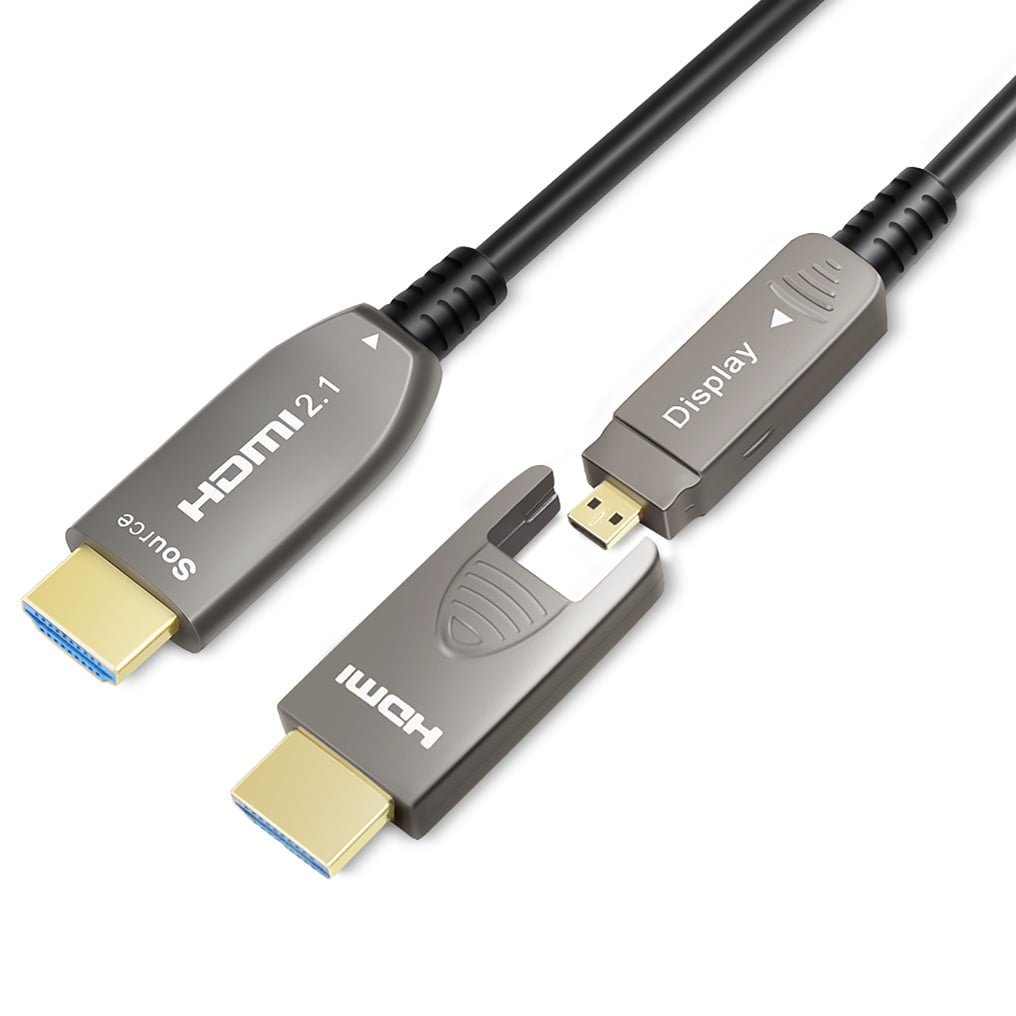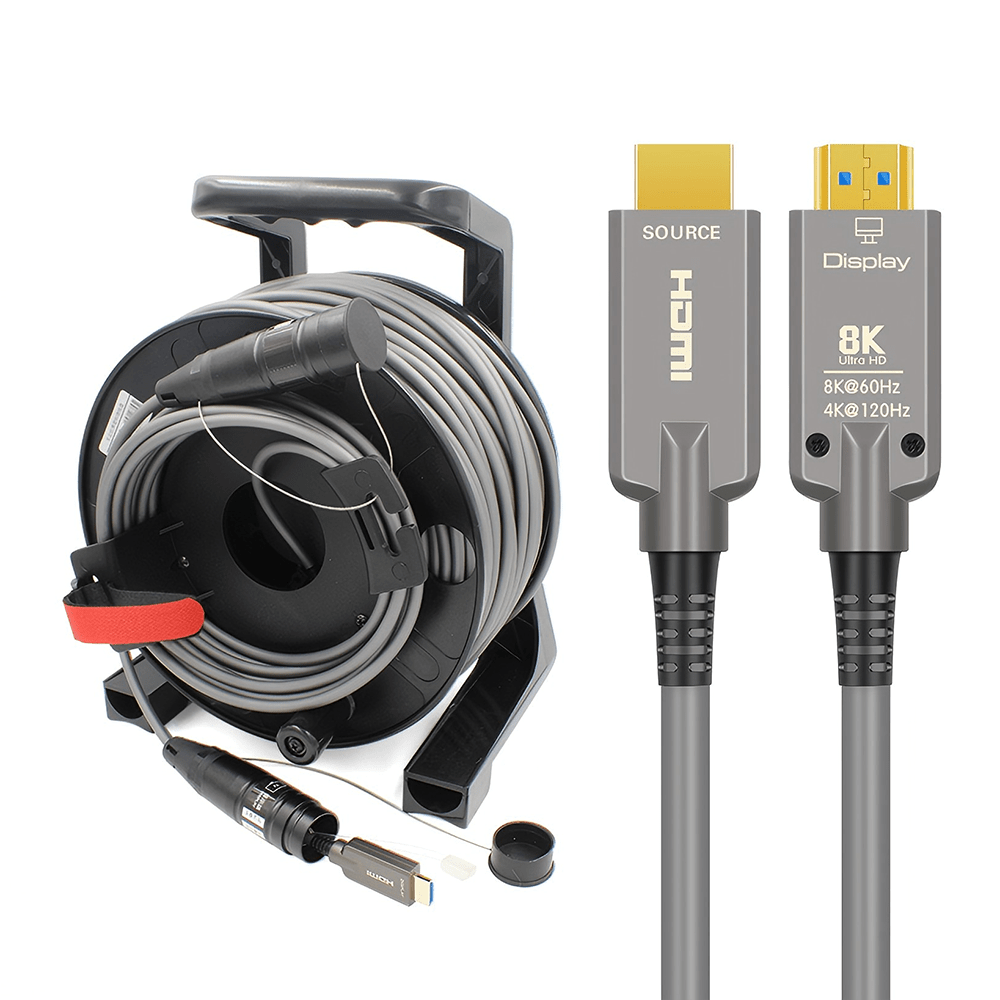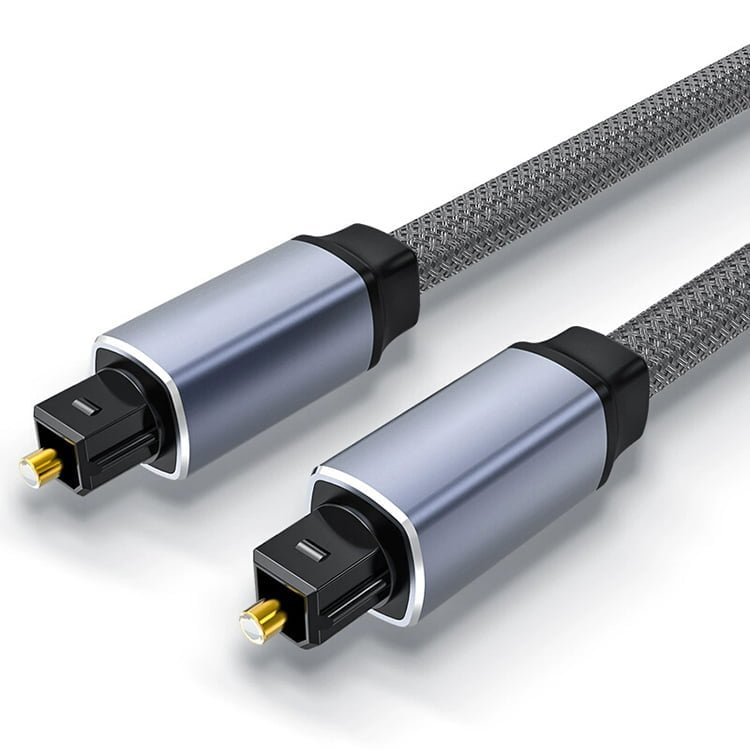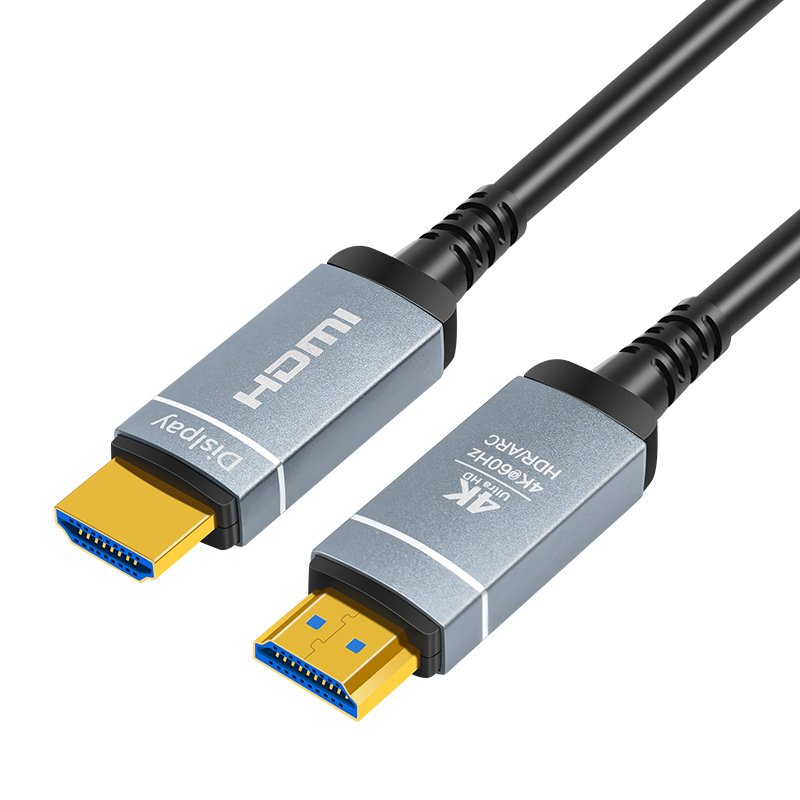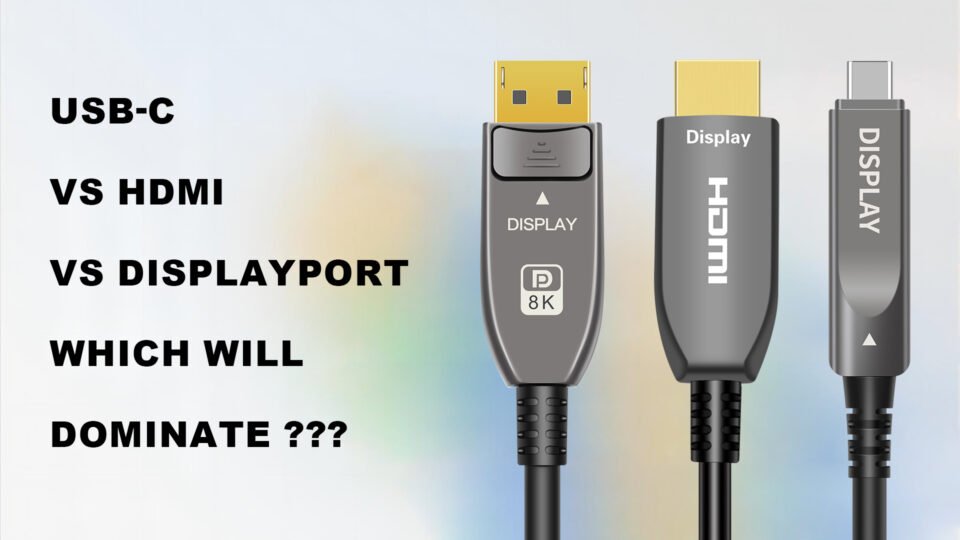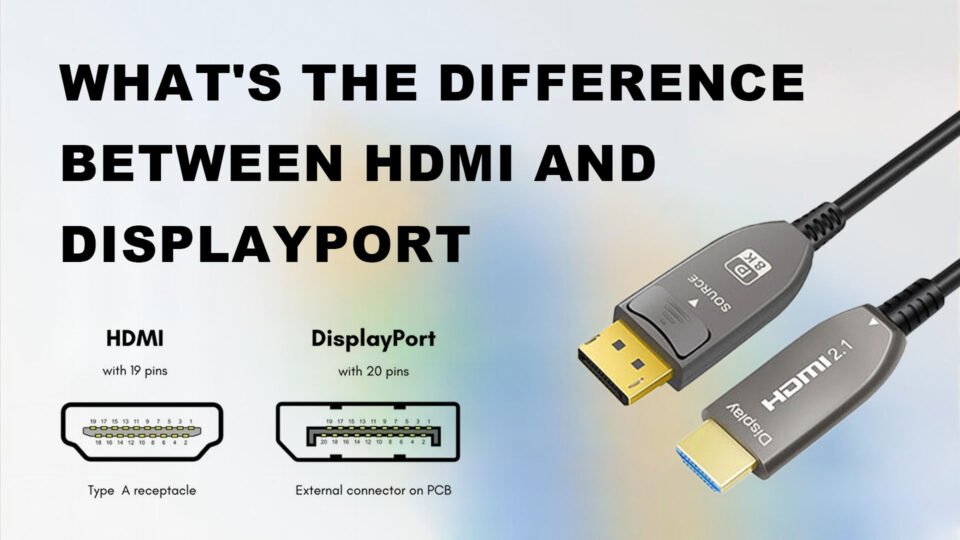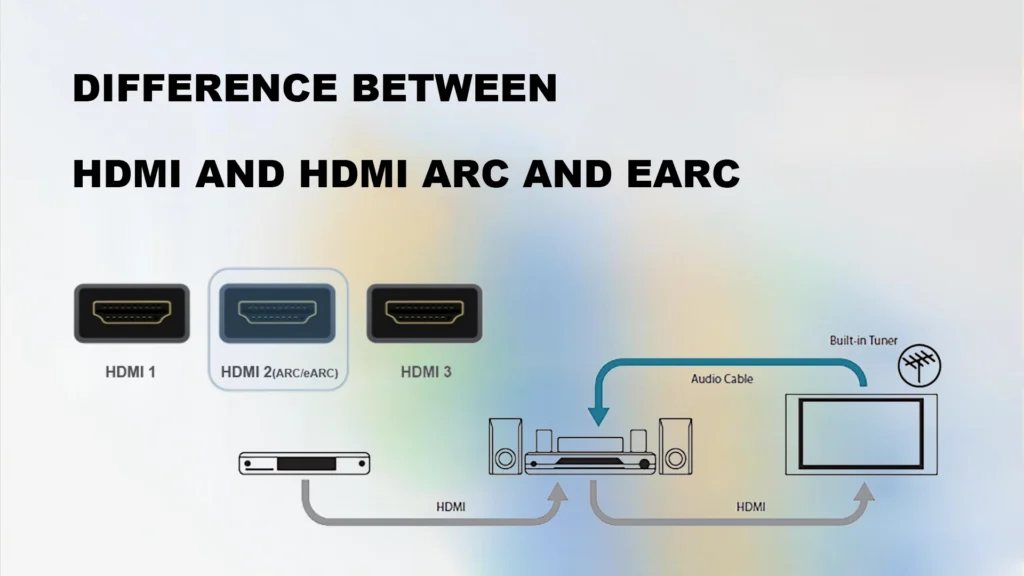
HDMI cable is one of the most popular consumer solutions for connecting video and audio sources to compatible displays and sound systems. HDMI is one of the most popular digital interfaces for transmitting high-definition audio and video signals over a single cable. Because it supports Audio Return Channel (ARC) technology, it can connect multiple high-definition sources (such as streaming devices, audio, game consoles, etc.) outputs to the input of high-definition displays, simplifying the operation of connecting external audio and video systems to TVs and devices such as game consoles, Blu-ray players, desktop computers, etc., allowing you to listen to TV audio without using additional cables. With the advent of eARC technology, this useful tool has gained more features and capabilities. eARC can do something that ARC can’t do, but this requires that the hardware must be upgraded to the latest HDMI standard. If your hardware can’t take advantage of it, then you can’t experience the new features of eARC, so if you want to experience the latest eARC, an excellent cable is necessary.
Here are some Fiber Optical HDMI Cables we recommend for three scenarios: multiple interface requirements require wall penetration, complex environments that require pressure and pulling resistance, and complex outdoor environments such as AV rentals and staging that require super protection over long distances for your reference:
Of course, if you’re still unsure of your needs or want to learn more, to help you decide which generation of ARC technology is best for you, we’ll take a brief look at HDMI and walk you through the basics of HDMI ARC and HDMI eARC, two audio-focused technologies that simplify the process of connecting your TV to compatible home theater speakers by reducing the number of cables required.
What is HDMI?
To understand what HDMI is and what it does, we can simply break down the acronym:
High Definition (HD): The latest TVs support amazingly clear picture and sound quality. But higher quality means a huge amount of data. Not all cables or connections can transmit all that data at the speed or bandwidth for optimal performance. HDMI was created to solve this problem, and newer versions continue to increase the bandwidth to keep up with the ever-increasing levels of video and audio quality.
Multimedia (M): When we say “multimedia,” it means that HDMI can support many types of media. HDMI supports uncompressed video and multi-channel audio; that’s why we call it a multimedia interface.
Interface (I): An interface is essentially a connection between two devices. It’s where those devices communicate and share data back and forth. Here, HDMI acts as an interface between input devices (the source of your entertainment) and output devices (the devices that play or display your entertainment).
(Image source: HDMI.org)
HDMI is a digital video connection standard for high-definition televisions that was designed to ensure compatibility between video and audio devices on a single digital interface. In simple terms, it’s a universal interface for transmitting compressed and uncompressed audio and video from a source device to a display device.
It builds on the existing DVI (Digital Video Interface) high-speed serial link to send video signals to a computer display by adding control and device communication capabilities and, most importantly for us, digital audio.
All HDMI devices must support the basic audio format in stereo, uncompressed, pulse code modulation (PCM) format. Other audio formats are optional, allowing for 8 channels of uncompressed audio at bit depths of 16, 20, or 24 bits and sampling rates from 32kHz to 192kHz. HDMI will also carry any LEC 61937-compliant compressed audio streams, such as Dolby Digital and DTS, as well as 8 channels of 1-bit DSD audio (such as used on Super Audio CDs) at up to four times the rate of Super Audio CDs. After version 1.3, HDMI allows Dolby TrueHD e DTS-HD Master Audio lossless audio streams.
The HDMI interface has evolved over the years, with new versions (HDMI 2.1 being the latest) supporting new audio and video technologies such as 3D, 4K, 8K,HDR, and 4K/144Hz, 8K/60Hz, and more.
The HDMI ARC protocol wasn’t added to the spec sheet until 2009. It was introduced as part of HDMI version 1.4 and has been part of the specification ever since.
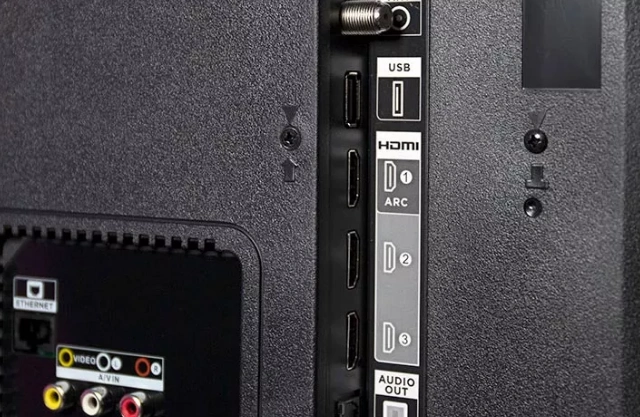
What is HDMI ARC?
ARC is short for Audio Return Channel. This feature was introduced about 10 years ago. Its name helps us understand its meaning and purpose, the most important point is the word “return”. The ARC feature enables the HDMI cable to act as both an audio output and an audio input, thus enabling two-way communication between all devices connected via a single HDMI cable. It sends video signals to the TV and audio signals from the TV to the bar, speaker system or AV receiver.
This means that not only can your TV send audio to your audio device, but your audio device can also feed audio back to the TV. This feature is particularly useful for smart TVs or devices with built-in tuners, as the audio from these devices can be routed to your surround sound system or sound bar. HDMI Audio Return Channel (HDMI ARC) is a technology introduced in the HDMI 1.4 version. It is designed to make HDMI a powerful replacement for existing audio cable connections between TVs and external AV receivers or speaker systems. HDMI ARC has a much larger bandwidth than older audio cable solutions such as optical, so it can transmit all the audio and video required for streaming services and physical media. This reduces the number of cables required in your AV setup.
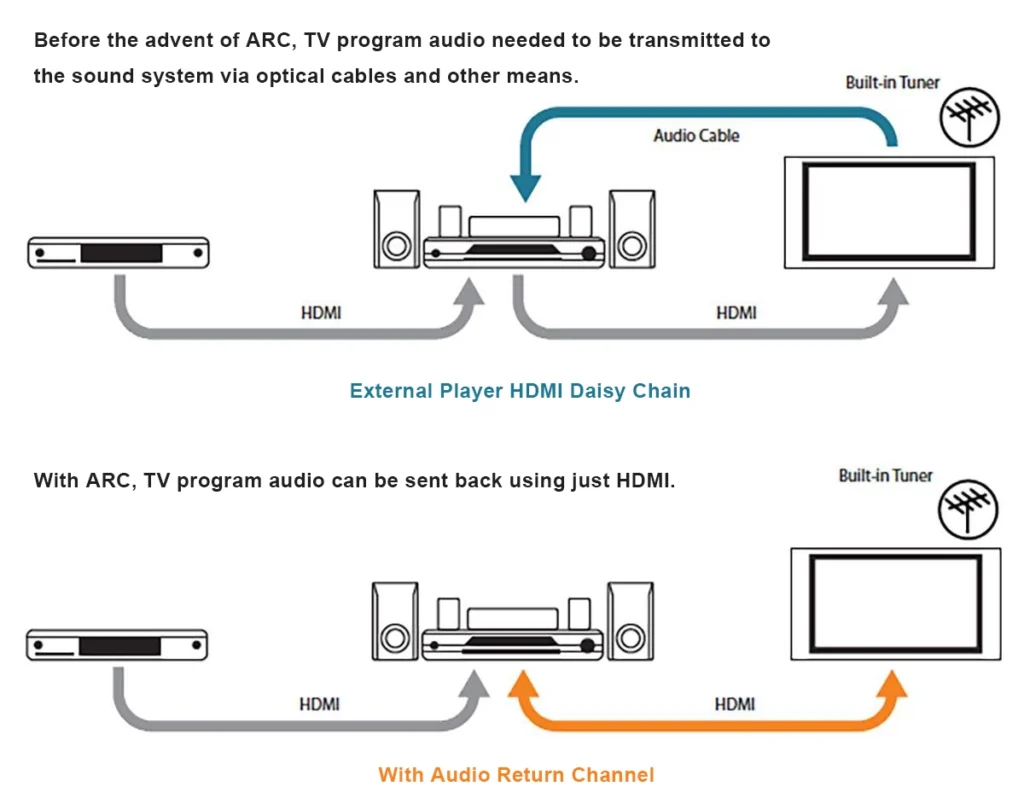
At the same time, HDMI ARC allows information to be transmitted in both directions, so in addition to using an HDMI cable to transmit audio from the TV to the AV system, you can also simplify the cables by routing all the devices connected to the AV setup (if it has enough HDMI connections). You can connect a game console or Blu-ray player to the sound bar or audio system with an HDMI cable, and then use another HDMI cable to connect to the TV. This saves extra wiring, creating a simpler, neater setup, while still enjoying the audio through the audio setup and the picture through the TV.

(Inspired by: sct.com.tw)
In addition to this, HDMI ARC also introduces support for Dolby Atmos, which allows for vertical placement of sounds in a surround sound setup, although this can only be achieved with the lossy Dolby Digital Plus codec.
When it comes to enjoying the best audio experience, HDMI ARC plays a key role in supporting a wide range of audio formats. Here are the most common formats supported by HDMI ARC to help you enhance your audio experience:

(Image source: dolby.com)
Dolby Digital: HDMI ARC supports Dolby Digital, a widely used format that provides high-quality multi-channel audio for TV shows, movies, and games. This format can bring excellent surround sound effects to your home theater experience.
Dolby TrueHD: As a lossless audio format, Dolby TrueHD provides high-resolution audio that matches the quality of the original studio recordings. HDMI ARC supports this format, enhancing your audio experience and making the sound more realistic and close.

(Image source: dts.com)
DTS: Another popular format supported by HDMI ARC is DTS, which stands for Digital Theater System. It provides multi-channel audio for movies, music, games, and other sources, making it a great choice for a variety of content.
DTS-HD: If you prefer to enjoy high-resolution audio, DTS-HD is a good choice. HDMI ARC supports this lossless audio format, providing you with high-quality sound and a more immersive audio experience.
DTS-HD Master Audio: As the best version of DTS, DTS-HD Master Audio is also supported by HDMI ARC. It brings the highest quality audio to your home theater, providing an unparalleled listening experience.
ARC is excellent, but there is also a big problem:
Technically, the TV cannot send 5.1 audio through HDMI. In other words, if you are watching a Blu-ray movie with 5.1 Dolby Digital or DTS, and it is connected directly to the TV, your receiver may only get 2.0 audio. TVs that can do this are called “5.1 pass-through”. This limitation led to the birth of eARC, which allows external speakers to play 5.1 channels and Dolby Atmos at the same time.
What is HDMI eARC?
HDMI eARC stands for HDMI “Enhanced Audio Return Channel”. It is an enhanced version of ARC technology. The eARC standard was introduced in the latest version of HDMI (HDMI 2.1) and is a unique feature of HDMI2.1 and compatible devices. It works similarly to HDMI ARC, but with greatly improved bandwidth and speed. It uses the extra bandwidth of HDMI2.1 cables to support higher quality uncompressed 5.1 and 7.1 surround sound audio, as well as enhanced surround sound technologies such as Dolby Atmos and Dolby TrueHD versions of DTS:X. While most Dolby Atmos audio can be played over HDMI ARC, you need HDMI eARC to play lossless Dolby Atmos audio through the Dolby TrueHD codec.
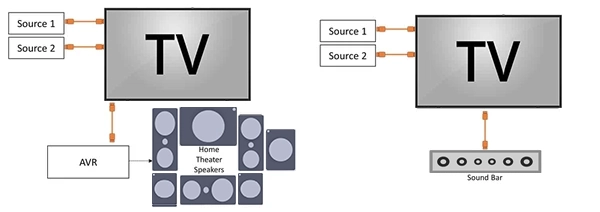
(Inspired by: hdmi.org)
Audio Return Channel allows only digital audio data to be transmitted over an HDMI cable. In this sense, an HDMI cable can send video and audio information back and forth between a TV and a soundbar or amplifier/AV receiver.
The main benefit of eARC is a massive increase in bandwidth and speed. This allows you to send higher-quality audio from your TV to your soundbar or AV receiver.
eARC can transmit up to 32 channels of audio, including an eight-channel, 24-bit/192KHz uncompressed data stream at speeds of up to 38Mbps.
This means that all the high-bitrate formats currently available on Blu-ray Disc, 4K Blu-ray, and some streaming services – Dolby TrueHD, DTS-HD Master Audio, and object-based formats such as Dolby Atmos and DTS:X – will be compatible.
Difference Between HDMI ARC and eARC
Overall, HDMI ARC and HDMI eARC differ in several key features. Below are the specific differences between them and Toslink:
| Function | TOSLINK: GOOD |
HDMI-ARC: BETTER |
HDMI-eARC: BEST |
|---|---|---|---|
| Cable Used | Optical S/PDIF | HDMI | HDMI with Ethernet |
| Stereo Support | Sim | Sim | Sim |
| Compressed 5.1 | Sim | Sim | Sim |
| Uncompressed 5.1 | No | No | Sim |
| Uncompressed 7.1 | No | No | Sim |
| High Bitrate & object based up to 192kHz, 24-bit (eg: Dolby Atmos*, DTS:X**) |
No | No | Sim |
| Maximum Audio Bandwidth | ~384 Kbits/second | ~1 Mbits/second | 37 Mbits/second |
| Discovery | No | CEC | eARC data channel |
| eARC Capability (Audio EDID, etc.) |
None | CEC | eARC data channel |
| Lip Sync Correction | No | (Optional) | (Mandatory) |
| TV Mutes & Controls Volume | No | Yes (CEC) | Yes (CEC) |
| Powering TV Powers Audio Device | No | Yes (CEC) | Yes (CEC) |
| ARC Fallback | No | N/A | Sim |
(Table from: HDMI.org)
Here are our recommended Toslink, HDMI ARC, and HDMI eARC cables corresponding to the parameters in this table:
FAQ
Q1: How can I tell if my HDMI cable is eARC?
A1: There is no specific HDMI cable exclusively for eARC, but only HDMI 2.1 cables fully support HDMI eARC. Therefore, if your cable is an HDMI 2.1 cable, it should support eARC without issues. However, identifying your cable’s HDMI version might be tricky if you don’t know it. Some HDMI cables have labels indicating their version, so be on the lookout for these. Sometimes, cables will also have resolutions like 4K or 8K printed on them. If it’s 8K, you likely have an HDMI 2.1 cable, and in such cases, it should support eARC as long as you connect it to compatible displays and devices. The only way to confirm if you have a cable compatible with eARC is to test it. If you plug an unknown HDMI cable into a TV and device that support 4K resolution and up to 120Hz refresh rate, you can determine which generation your HDMI cable belongs to by adjusting the TV settings. If it manages 4K only at 30Hz or lower, it’s HDMI 1.4. If it supports up to 60Hz, it’s HDMI 2.0. If it can handle full 4K at 120Hz, then it’s HDMI 2.1 and eARC compatible.
Q2: Do older HDMI cables support eARC? Is eARC backward compatible with ARC?
A2: Technically, high-speed HDMI cables with Ethernet can support eARC technology. However, these older cables may not meet the standards of modern HDMI 2.1 cables, so support cannot be guaranteed; even if it works, the experience might not be optimal.
If your TV supports HDMI eARC but your AV amplifier or soundbar is only compatible with HDMI ARC, you might still get sound – but the bandwidth limitations of ARC mean you won’t experience the high bitrate audio that eARC can deliver, so it’s not backward compatible.
The only way to fully enjoy the benefits of eARC is by using HDMI 2.1 SuperSpeed cables. As mentioned, there are several ways to check if your cable is HDMI 2.1 (and eARC) compatible, but it’s usually best to purchase a new HDMI 2.1 cable specifically known to support eARC.
Q3: What kind of cable do you need for eARC?
A3: Like ARC, eARC requires an HDMI cable, but unlike ARC, only HDMI 2.1 generation cables are designed to support eARC. This latest HDMI standard significantly boosts data transfer rates, unlocking higher resolution and refresh rate support, and adds many useful features for TV viewers and console gamers.
It offers better variable refresh rate (VRR) support, quick media switching, and fast frame transmission support. Most importantly for this discussion, it adds eARC support. You’ll need an AV system and TV with eARC ports to fully utilize it. However, most modern TVs have at least one HDMI 2.1 port with eARC support, and higher-end TVs from recent generations have offered some level of eARC support for years.
It’s worth noting that older HDMI 1.4 high-speed cables with Ethernet and HDMI 2.0 cables with Ethernet should also be compatible with eARC. However, results can vary depending on the cable quality.
Q4: Can you hear the difference between HDMI ARC and HDMI eARC?
A4: Ultimately, whether you can discern the difference between HDMI ARC and eARC depends on how you use them and how discerning your ears are. If you don’t utilize surround sound or some of the advanced audio features exclusive to eARC, the audio might sound quite similar. The same applies if you switch to an optical solution.
However, if you are using 5.1 or 7.1 surround sound with additional features like Dolby Atmos, you might notice a difference. ARC can only transmit compressed surround sound audio, whereas eARC has the bandwidth for uncompressed audio. This doesn’t mean ARC sounds bad; clever compression algorithms ensure that the final result still sounds good, but it will lack the lossless vertical sound positioning support of TrueHD Dolby Atmos and DTS:X, which audiophiles might notice.
Q5: Which is better for home theater, HDMI ARC or HDMI eARC?
A5: If you are using external speakers with your home theater system and wish to maximize the quality of your audio output, HDMI eARC is the best choice. Ensure that all components, such as your TV and soundbar or audio system, are eARC compatible to guarantee the best bandwidth. Otherwise, your bandwidth might be limited by the weakest link in your system, such as a device only compatible with ARC.
Sobre nós
No AOCFiberlink, nos especializamos na fabricação de alta qualidade fiber optical USB cables & fiber optical HDMI cables that cater to the demands of modern audiovisual systems. Our fiber optical USB & HDMI cables are designed to deliver uncompromising performance, ensuring that you enjoy the true potential of your high-definition devices.
Besides the standard fiber optic HDMI Cables & fiber optical USB Cables, we also provide tailor-made solutions for customer specific needs.
Please don’t hesitate to contact us.
You can also subscribe to our Youtube channel to stay tuned.



